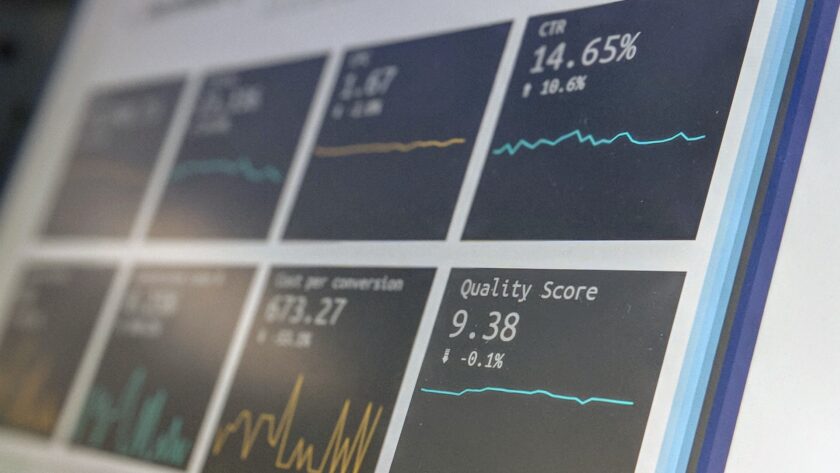Customer data platforms ingest data in real-time, and the best ones make that data available instantly. They can support campaign management, data analysis, and real-time personalization tools.
A guide to customer data platforms can help create unified customer profiles and make them accessible to other systems across the company to drive growth. They also manage first-party data and consumer privacy, supporting compliance with data policies.
How CDPs Work
A CDP combines data from multiple sources to create a single view of the customer. This data is updated constantly and is accessible to all departments in the company via a unified platform.
The CDP ingests this information through mobile SDKs, APIs, Webhooks, or built-in connectors. It’s then enriched with identity resolution capabilities that match and merge data points to create a single customer profile.
The resulting data can then be fed into and out of marketing systems like CRMs, ESPs, and email campaigns. Streamlined systems integration reduces data redundancies and allows marketers to focus on creative and analytical work.
What is a CDP?
A CDP is software that collects data from multiple tools to create a unified view of customers. It’s designed to be a single source of truth and a powerful tool for marketers.
CDPs connect to various technology platforms and data sources through built-in connectors, SDKs, webhooks, and APIs. They identify and merge data from disparate systems, including marketing, CRM, POS, customer support, and ecommerce.
This data is then ingested into a unified profile and activated across multiple channels to deliver personalized content.
What are the Benefits of a CDP?
A CDP centralizes data across the marketing department’s multiple tools and platforms so teams can access a single customer profile (data unification). The platform also identifies insights, organizes them, and enables them to be used by different departments.
This is particularly valuable in the age of GDPR and other privacy regulations that require companies to manage and document data consent actively. CDPs help with this by managing first-party user data and protecting it from being shared between marketing systems without consent. They also support data hygiene by identifying and addressing duplicates and inconsistencies.
What are the Benefits of a CDP for Marketing?
CDPs make it easy to organize data into real-time profiles that marketers can activate across channels. This eliminates the siloed data that causes marketing campaigns to fail and gives customers relevant and meaningful experiences.
CDPs also offer valuable marketing features like data unification, segmentation, and customer journey orchestration capabilities. They help marketers identify and target high-value audiences, which results in more effective ad spend. This ultimately increases customer loyalty and translates into more business for businesses of all sizes.
What are the Benefits of a CDP for Sales?
A CDP combines all of your customer data and creates unified profiles that are updated in real-time. This allows you to deliver personalized and relevant experiences across all channels at scale.
Customers who need a better digital experience turn away quickly, which turns into additional business for your competitors. A CDP helps identify problems and create a seamless digital experience that drives more conversions.
CDPs streamline integration by providing maintained turnkey connections with most martech systems, saving hours of manual work. They can connect to CRMs, ESPs, DMPs, DSI, marketing automation platforms, and other tools.
What are the Benefits of a CDP for Customer Service?
A CDP provides a powerful single source of truth that empowers marketers to personalize real-time customer experiences across devices. In addition, it can help companies comply with data regulations such as CCPA and its 90-day lookback period for privacy.
A CDP can also support loyalty-building strategies by enabling data to be shared across teams using unified customer profiles. They can also provide various other features like predictive analytics, audience segmentation, and journey orchestration capabilities.
What are the Benefits of a CDP for Commerce?
A CDP helps marketers make informed decisions by providing insights into customer behavior and preferences. This enables companies to increase sales, improve marketing personalization, and identify growth opportunities.
CDPs ingest data from many sources through mobile SDKs, APIs, or built-in connectors. Then, they sift through the data to build unified customer profiles.
Before selecting a CDP, it’s important to define your goals. Determine what use cases you want to tackle, such as increasing marketing personalization or improving retargeting. Then, look for vendors that can demonstrate how their platform executes these use cases.
What are the Benefits of a CDP for Analytics?
A CDP collects data from all your marketing technology systems and sources, unifies it, and organizes it into a persistent, unified customer profile. This data can then be leveraged by other systems for CRM, marketing automation, DMPs, A/B testing, and campaign execution.
Connecting and acting on all the information you have about your customers is essential for marketing with impact. A CDP makes it easy to achieve this by eliminating blind spots and delivering a single customer view. This is the most valuable benefit of a CDP.
What are the Benefits of a CDP for Artificial Intelligence?
The best CDPs offer AI machine-learning processing to help marketers remove manual oversight from data collection, detect inconsistencies, and improve the quality of their unified customer profiles. This allows marketers to understand better and find ideal customers, implement multi-touch attribution models, and run predictive analytics.
A CDP’s architecture separates data types with unique logic so that changes in raw data are transparent to teams and data scientists without needing to connect different data sources manually. This ensures consistent results, leading to good campaigns, lost revenue, and wasted money.
What are the Benefits of a CDP for Data Security?
A CDP collects and organizes data from your sources into unified, individual profiles. It then uses these profiles to identify similar audiences and reach them with effective, privacy-safe marketing messages.
Through a two-way data pipeline, infrastructure-layer CDPs connect first-party data to marketing, sales, product, analytics, and customer support systems. This eliminates siloed data and saves engineering teams thousands of hours of development work.
A CDP uses identity resolution and a data hygiene layer to create a single, persistent profile and structures this data for other marketing systems. This streamlines integration and saves marketers millions in costs.




